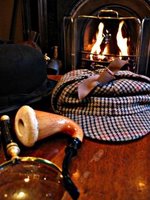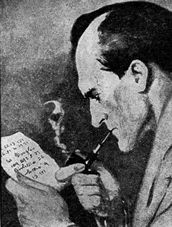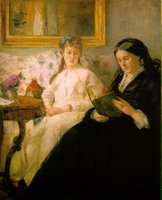 Boring Lessons 101 "How to Write"
Boring Lessons 101 "How to Write"
A challenge to teaching writing in the English classroom is that it can be a really boring subject. “Writing” as a topic seems to be deficient when compared to other topics of the English classroom; it lacks the excitement and natural appeal of a novel or play and the provocation and mystery of poetry. Part of the problem is that students feel they are already experts. Why rehash material they already know? Students have been hammered over the head with “how to write” every single year of their educational stint. They have encountered the “hamburger” model, the "layered cake" model, the "tossed salad" model (I just made that one up now), the pre-plan chart model, the five-paragraph model… the list goes on. For some students the notion of teaching “writing” in English is like the teaching of “walking” in Phys-Ed.
As my students prepared for a comparison essay that I am currently marking, I told them that in real life, they will never write an essay like this again. In other words, academic essays serve no purpose in themselves outside the academic world. (How’s that for a motivator?). I made the case, however, that essays require you to think critically and creatively on a subject. Essays require you to develop a logical and persuasive argument. Essays require you to know the text and to evaluate evidence. Essays require you to communicate, on paper, with clarity and style. All of these skills you will use in life. That being said, Bruce Pirie, in his book on English education, recently rocked my world.
Alternatives to the Essay?
In
Reshaping High School English, Bruce Pirie argues that student writers need to ask, “What shape is demanded by what I am trying to say?” (77). I felt I was encouraging my students to ask this question by having my students write with these question in mind: How many paragraphs, points, factors, pieces of evidence should be included in an essay to best make my case? What the student is trying to communicate to the reader should determine the number of paragraphs, points, style, etc. Pirie, however, goes beyond number of paragraphs and factors. He wants writers to ask what “shape”—by which he means that the “essay” is only one possibility. Pirie argues that there are other means to teach communication and critical thinking skills and he suggests some ways. I agree. He also argues powerfully that essays encourage students to view themselves as authorities rather than encouraging “tentative and cooperative exploration” (86). I do not want my students to consider themselves to be experts and then just give their opinions; rather, I want them to give a position based on the text—to submit their thinking to the text. I was hoping my students would not spout off unfounded opinions; I was hoping they would give intelligently considered positions based on a solid, evidence-laden argument. But, in the end, I believe I am asking my students to become an “authority on some aspect of the subject,” as Pirie suggests (80). Blast you, Bruce Pirie!
In a daunting and formal arena like academic essays, most students doubt their own thinking anyway and replicate teacher lectures, Spark Notes, and other fine resources. Uncertainty of one’s own position is an important step, sometimes, to true learning. Pirie points out, however, that teachers sacrifice “uncertainty” on the altar of the “illusion of mastery” (80). Despite the alternative options—“shapes” as Pirie calls it—for communicating ideas, the essay still stands out as a formidable assignment. The essay is a serious arena for critical thinking; students tend to apply themselves with greater gusto because the essay presents a serious and sophisticated venue for their thinking (when they do, actually think). I am torn. I must get to work marking these blasted essays, which may or may not be of any pedagogical value.
Story-telling vs. the Essay
Let me close with C.S. Lewis. Awhile back, I was reading
The Horse and His Boy to my son and I came across this little tidbit: “Aravis immediately began, sitting quite still and using a rather different tone and style from her usual one. For in Calormen, story-telling (whether the stories are true or made up) is a thing you are taught, just as English boys and girls are taught essay writing. The difference is that people want to hear the stories, whereas I never heard of anyone who wanted to read the essays.” Too true.
Works CitedLewis, C.S..
The Horse and His Boy. USA: Harper Collins, 1994.
Pirie, Bruce.
Reshaping High School English. Toronto: Natl Council of Teachers, 1997.
Click here for Part 1: Bacon, Chickens and the Art of Teaching Writing
 George Herbert on Prayer
George Herbert on Prayer









